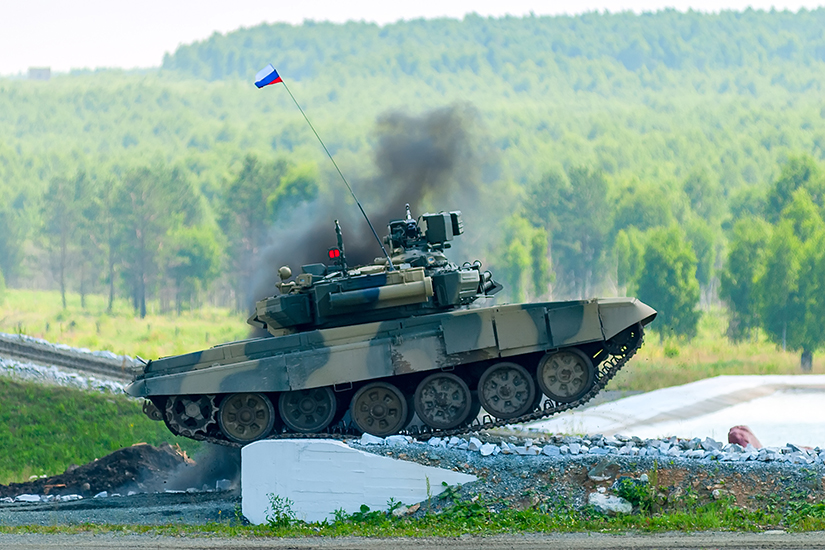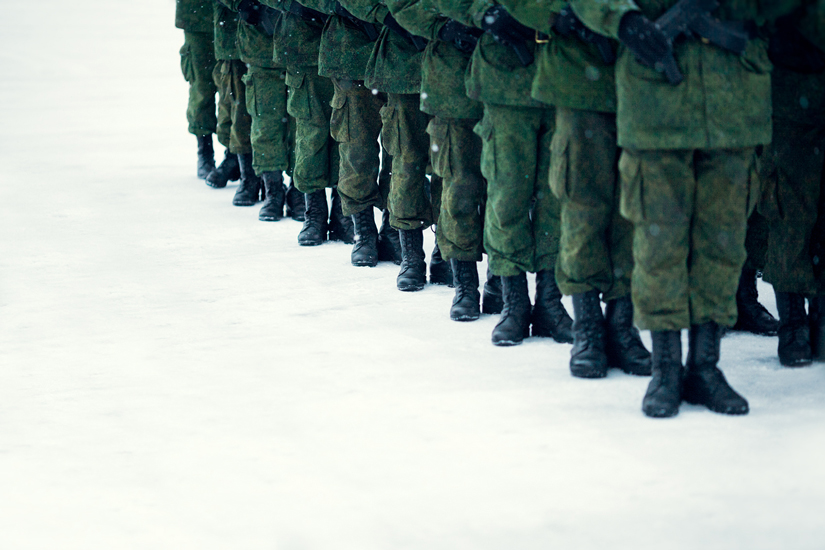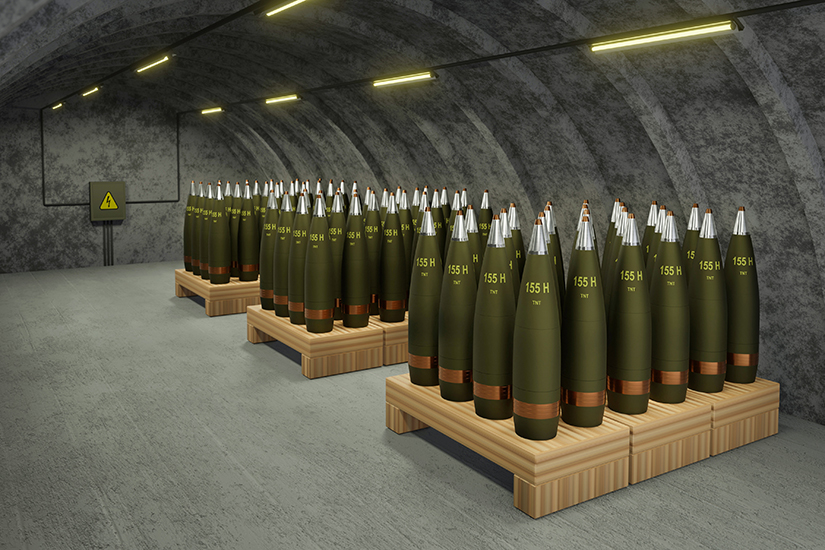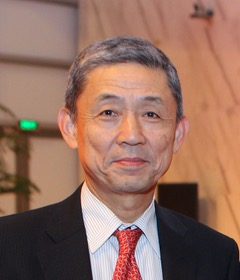A little more than a year after Russia invaded Ukraine on February 24, 2022, there are still no signs that Ukraine will be defeated. At the start of the war, Russian forces rapidly closed on the Ukrainian capital of Kyiv, and Ukraine’s fate was in doubt. However, the Ukrainians held firm, and on April 6, only six weeks after the war began, a senior U.S. Defense Department official revealed the official position that Russian forces had completely withdrawn from the front of Kyiv.[1] Why is it that Russia, which was seen as overwhelmingly superior, is unexpectedly struggling, and conversely, the Ukrainian military is exceeding expectations in its performance? This article will examine this question while focusing on ground operations in the traditional sense. It is important to note that Ukraine is fighting well in the information and cyber domains as well, but these issues will be examined on a separate occasion.
International support
International support from Western countries, the backdrop of Ukraine’s performance, should not be overlooked. It is not widely known, but NATO countries and other Western societies have supported Ukraine in various ways since Russia annexed Crimea in 2014. For example, the U.S. sent a total of 364 personnel on military aid missions to Ukraine in 2015, immediately after the annexation of Crimea, including 310 training support personnel.[2] In 2021, the year before the Russian invasion, a military advisory group of 200 Canadians, 30 Lithuanians, 40 Poles, and 150 Americans helped train and modernize the Ukrainian army.[3] That support has greatly expanded since the invasion last year, including the provision of enormous amounts of weapons and ammunition. According to press reports, as of last fall, the U.S. had already provided more than $16.8 billion in military assistance.[4] In the broader context of information and cyber warfare, Western government agencies as well as information companies like Microsoft and Amazon have been assisting Ukraine primarily in the areas of training personnel for cyber security, institutional reform, and system strengthening in order to strengthen Ukraine's cyber defense capabilities.[5]
Demographics and troop replacement
In both Russia and Ukraine, as in Japan, the birthrate is declining and the younger population cohort is aging, so recruiting soldiers is not always easy. Despite this, many high-ranking officers in the Russian military have led operations with a disregard for human life, based on the mistaken belief that the human resources available to replenish the military are inexhaustible.[6] It has been noted since the mid-2010s that the Russian military has had serious problems recruiting soldiers. The demographic pressure of a declining youth population, the reduction of the conscription period to one year, and the introduction of a volunteer army system aimed at training professional soldiers have made recruitment difficult for the Russian armed forces. The fill rate for each service was as low as 82% as of 2014. Despite a slight turnaround since then, the volunteer recruitment targets set in the initial period of military modernization have not been met, and as a result, about one-third of soldiers are still conscripts who have received little training.[7] Russia's total population in 2020 was about 146 million with a fertility rate (birth per woman) of 1.51, similar to Japan's population of about 126 million with a fertility rate of 1.34. In such a society, if operational command is executed without regard to the loss of soldiers, recruitment will naturally become difficult. Moreover, it will lower the morale of soldiers and result in the loss of trust and support from the families of the soldiers, in other words, the people, for the military.

Ukraine has experienced demographics similar to those in Russia and has had problems with the high turnover of military personnel. Ironically, because of this problem, there are many young people among the general public who have received serious military training, and as a result, they have made an additional de facto reserve force.[8] Thus, in formulating its invasion plan, the Russian military made the mistake of underestimating Ukraine's mobilization capacity.
Wartime leadership and operational command
The International Institute for Strategic Studies, a British think tank, says the main reasons Russia is struggling are overconfidence in its own forces and underestimating its enemy.[9] Russia deployed 150,000 troops at the start of the war, but it clearly overreached in its objective. Russia's invasion plan envisioned a short decisive battle—a blitzkrieg so to speak—based on the premise that Ukraine would be overthrown within 10 days of the outbreak of war and the entire country would be pacified and annexed by August. The early capture of Kyiv would force the Ukrainian leadership to flee and the state would collapse. There was also the optimistic scenario that the pro-Russia population in Ukraine would support the Russian military as it advanced. From the Marco Polo Bridge Incident of 1937 until the end of World War II in 1945, the Japanese military deployed up to over one million troops in northern China, and area roughly the size of Ukraine. However, it could only control major towns on and areas around rail lines—in other words, points and lines. It was impossible to control a country 1.5 times the size of Japan with just over half the number of troops of the modern Self-Defense Forces.
At the tactical level, the Ukrainian military appears to be outperforming the Russian military in operational command. Since the beginning of the war, both sides have stressed the leadership of junior commanders. It is said that the Russian military gave 127 Battalion Tactical Groups (BTGs) areas of operation and tasks to accomplish during the invasion. A BTG consists of 600-800 men and is a compact but independent unit with several infantry companies as well as artillery, air defense, engineering, and logistical support functions. The aim of this formation is for relatively small units to disperse and maneuver autonomously to quickly settle the battle under fluid conditions. The keys to this, however, are the judgment of the junior commanders in the smaller units under the battalion commander and information-sharing among the dispersed units. More simply put, a BTG is an organization that relies on the abilities of junior and non-commissioned officers. Unlike the armies of the U.S. and NATO countries, this formation is not suitable for the Russian military, which lacks professional volunteer soldiers. As a result, it has been observed that the Russian military itself has abandoned this concept.[10]

Since 2014, Ukrainian forces have been engaging Russian troops for nearly a decade, albeit at low intensity. During this period, preparations have always been made with an escalation (i.e., a large-scale invasion) by Russian forces in mind. In particular, mid- and junior-ranked officers have been rotated to several fronts and tasked with becoming familiar with the terrain of each front and the tactics of the Russians.[11] In addition, Air Force fighter pilots were repeatedly trained to fly at very low altitudes over their own country in preparation for action under Russian air superiority from the beginning of an escalation, and they were well versed in the terrain before the actual battle. The difference with the Russian soldiers, who, to keep battle plans secret, were not even informed of their participation in the actual battle, to say nothing of the situation at the front where they would be deployed, is significant.
High-tech and legacy weapons
Among the Western support, it seems that the Ukrainian military relied heavily on relatively small and inexpensive high-tech weapons and legacy weapons such as conventional tube artillery, rocket launchers, and tanks. The impact of the portable anti-tank and anti-aircraft missiles has been particularly striking. The Javelin, a mobile anti-tank guided missile, has a range of 2,000 meters and, in top attack mode, penetrates the thinly armored top of the turret at a steep angle over the tank's head.[12] The armor on the upper part of the turret, in other words the ceiling of the fighting compartment where the crew acts, is not very thick because technology to attack tanks from overhead has never been put to practical use. However, an increasing number of recent anti-tank missiles, like the Javelin, have top attack capability. Furthermore, in Soviet and Russian tanks, the area under the floor of the fighting compartment is used as an ammunition storage compartment, and there are no bulkheads to protect the fighting compartment. Therefore, when they are hit by a top attack, the shells stored beneath tend to ignite, causing a large explosion. This is why scenes of Russian tank turrets flying up in the air like a jack-in-the-box are frequently reported.
The role of legacy weapons like conventional artillery has also been significant. In addition to pinpointing and destroying targets with precision-guided weapons, ground combat often requires, for example, barraging enemy infantry positions to prevent them from moving or acting. This is when the number of punches, like jabs in boxing, becomes important. When the author attended the Halifax International Security Forum in Canada last November, one of the most frequently heard phrases was “155-millimeter shells.” The Ukrainian military has worked in recent years to strengthen its artillery firepower with howitzers, other barrel artillery and multiple rocket launchers. This is based on the experience that since the annexation of Crimea in 2014, 90% of casualties in engagements with Russian forces have been caused by artillery. As a result, a comparison of Russian and Ukrainian troop strength at the beginning of the war shows that while Russia had an overwhelming advantage in total troop strength (900,000 to 210,000 troops) the difference in artillery was not at a decisive point (2,433 guns to 1,176 guns and 3,547 multiple rocket launchers to 1,680).[13] Furthermore, the combat efficiency of Ukrainian artillery is said to be higher than that of Russian artillery.[14] This is due to the fact that while the Ukrainian military uses the same artillery as the Russian military, it also makes extensive use of drones to search for targets and observe fire, and utilizes digital command and control systems to efficiently operate its artillery units.
Lessons about the importance of stockpiling ammunition
The important role of artillery means a great deal of ammunition consumption, and there are questions about whether ammunition production capacity can supply the required amount. The U.S. and other NATO countries have provided Ukraine with more than 150 155-mm howitzers since the war began last year.[15] On average, the Ukrainian military consumes 3,000 rounds of 155-mm ammunition per day, or 90,000 rounds a month.[16] In contrast, the U.S. in its entirety produces 14,000 rounds of this ammunition per month, meaning it takes six months to produce the monthly consumption of the Ukrainian military. With this unexpectedly high consumption of artillery shells and missiles, the U.S. Department of Defense has begun to strengthen its ammunition production base to about three times its current level, but this will take time. In the case of 155-mm shells, it appears the U.S. will reach its target of producing 20,000 shells per month by spring 2023 and 40,000 per month by 2025.[17]
This is an instructive lesson for the defense of Japan. To begin with, ammunition is less flashy than the weapons themselves, and the effects of the investment are difficult to see. Moreover, while a budget request for a naval vessel or fighter plane cannot be reduced by half, ammunition, like a liquid, can be cut by any percentage. Furthermore, procuring ammunition requires ammunition storage facilities. The fact that it is not easy to secure land to build ammunition depots in densely populated Japan has been one of the factors reducing the willingness to allocate spending for ammunition procurement. With the defense budget expected to increase, it is urgent that resources are invested in ammunition stockpiling, which has been neglected.

Conclusion
As stated at the beginning of this article, there are no signs that Ukraine will lose. As long as Western support continues, Russia does not seem to have a means to win. However, it is hard to imagine Russia losing. This can be explained for purely tactical reasons: The farther the Ukrainian counteroffensive goes, the longer the supply lines will become, and the more threatening the enemy will be. As the author noted in a previous article,[18] it is strategically inadvisable to put Russia in such a position given the fear of an escalation to the use of nuclear weapons. Unfortunately, there is no hope that this war will end in the short term because neither side can easily compromise on the current situation. It will take a long time to reduce the level of engagement and bring the situation to a point where it could be considered a standoff. In other words, it will take years just to bring the current state closer to a situation similar to the 38th parallel on the Korean Peninsula.
(2023/05/01)
Notes
- 1 U.S. Department of Defense, “Senior Defense Official Holds a Background Briefing(transcript),” April 6, 2022.
- 2 International Institute for Strategic Studies (IISS), Military Balance 2016, p. 207.
- 3 IISS, Military Balance 2022, pp. 214-215.
- 4 “U.S. ammunition surplus to be depleted soon due to prolonged support for Ukraine,” AFP BB News, October 11, 2022.(Japanese)
- 5 Nick Beecroft, “Evaluating the International Support to Ukrainian Cyber Defense,” Carnegie Endowment for International Peace, November 3, 2022.
- 6 Mykhaylo Zabrodskyi, et al., Preliminary Lessons In Conventional Warfighting from Russia’s Invasion of Ukraine: February-July 2022, Royal United Services Institute (RUSI), p. 52.
- 7 IISS, Military Balance, continues to observe the situation of Russian military recruitment. In particular, the 2013, 2015, and 2019 columns point to problems in recruiting volunteers (contract soldiers) in relation to trends in military reform.
- 8 See Note 6, pp. 14-15.
- 9 TIISS, Military Balance 2023, p. 153
- 10 “Russian Military Stops Battalion Tactical Groups or ‘Weaknesses Exposed by Lack of Commanders:’ British Opinion,” Asahi Shimbun Digital, November 29, 2022. (Japanese)
- 11 See Note 6, p. 13, 21.
- 12 The Javelin has two modes of fire: top attack mode, which targets tanks and other armored vehicles, and direct attack mode, which targets buildings and other targets. Both have a maximum range of 2000 meters (the latest one is 2500 meters), but the former is ineffective against targets below 150 meters, since it has to climb to an altitude of 150 meters before it can reach the target. The latter does not require much altitude, so the limitation is only 65 meters.
- 13 See Note 6, pp. 15-16.
- 14 IISS, Military Balance 2023, p. 159.
- 15 IISS, Military Balance 2022, p. 202; IISS, Military Balance 2023, p. 202.
- 16 See Note 4.
- 17 Sam Skove, “A Lack of Machine Tools is Holding Back Ammo Production, Army Says,” Defense One, March 3, 2023.
- 18 Noboru Yamaguchi, “The shadow of tactical nuclear weapons falling over Ukraine: the reason that the possibility of the use of nuclear weapons by Russia cannot be eliminated,” Sasakawa Peace Foundation, International Information Network Analysis, May 30, 2022.

